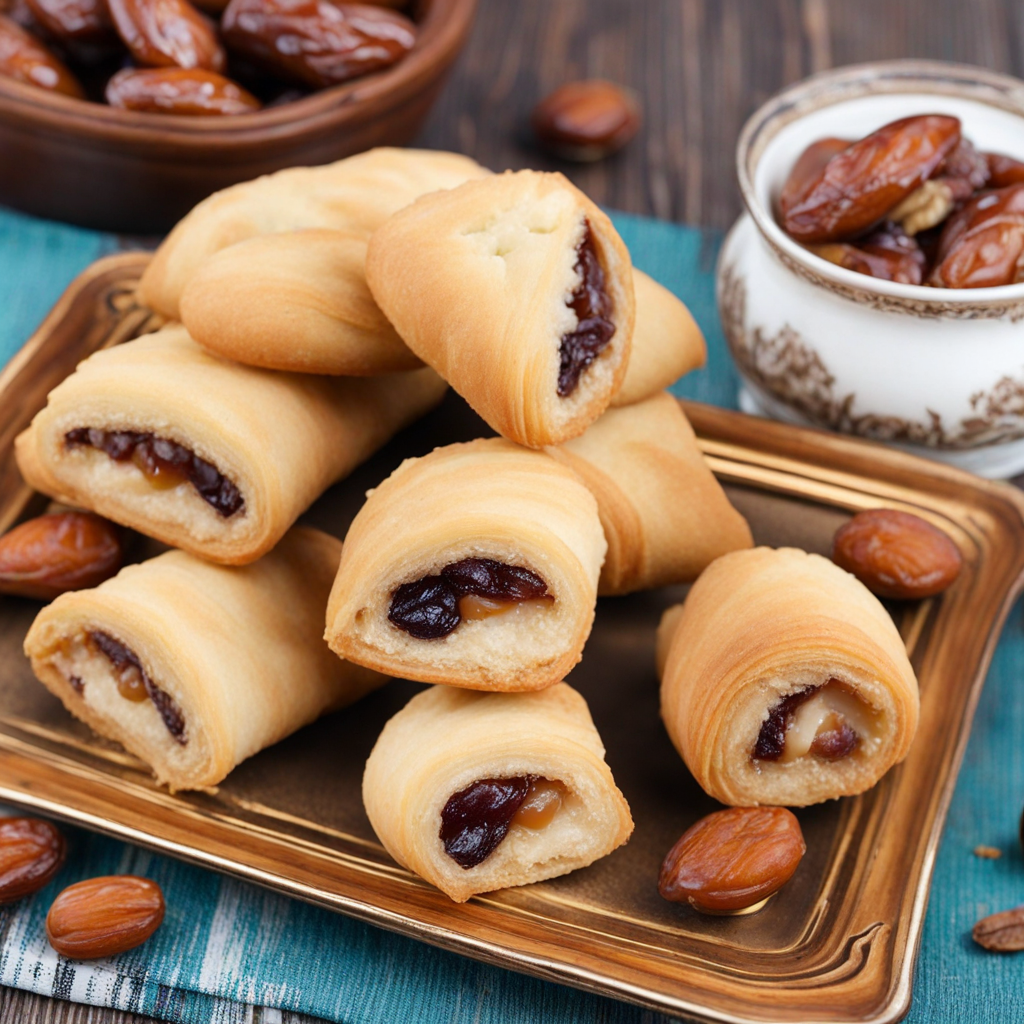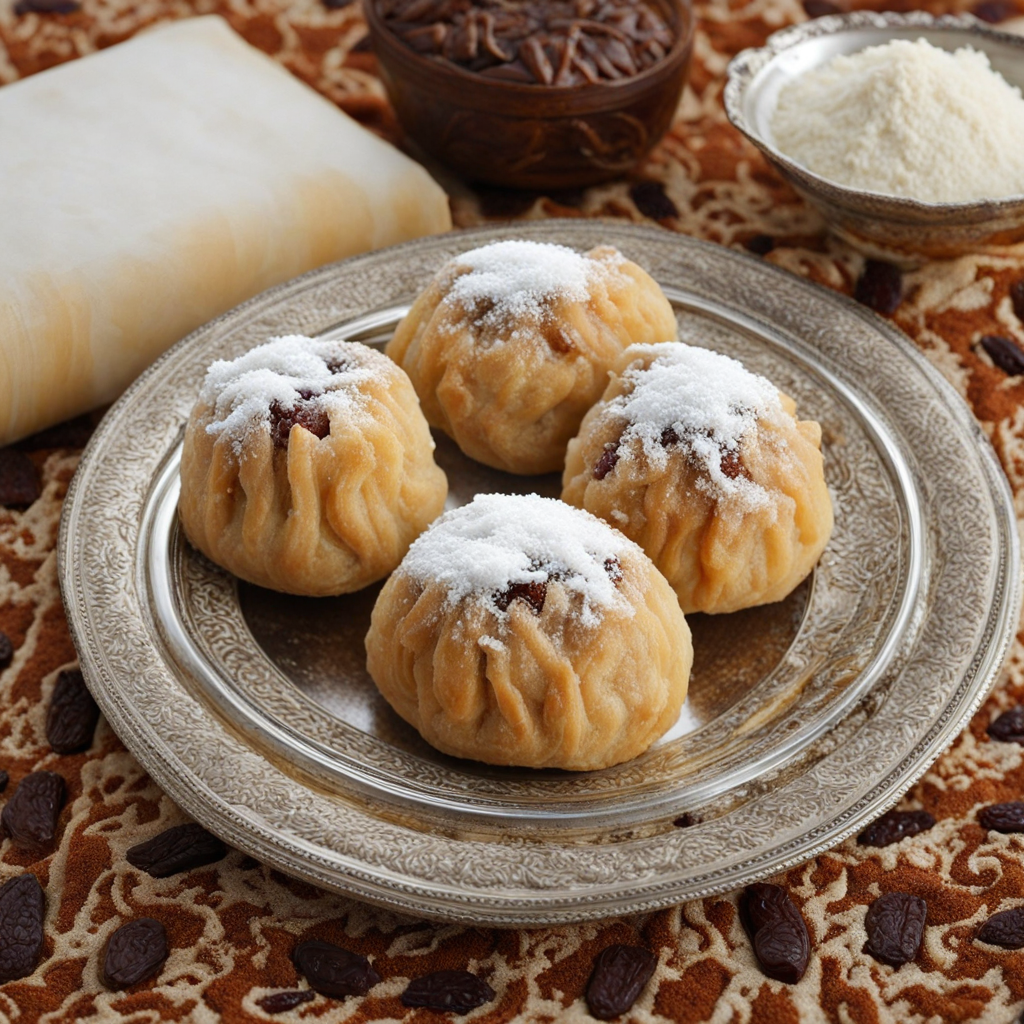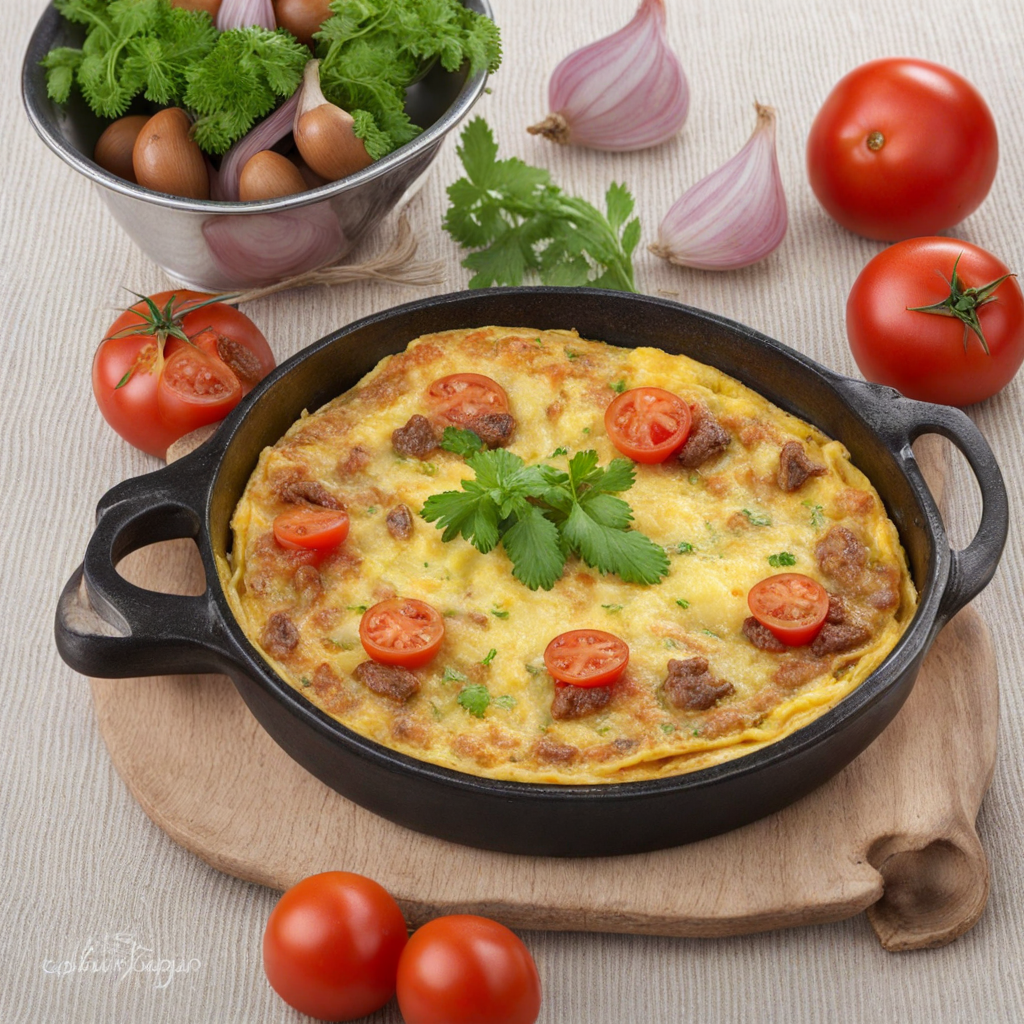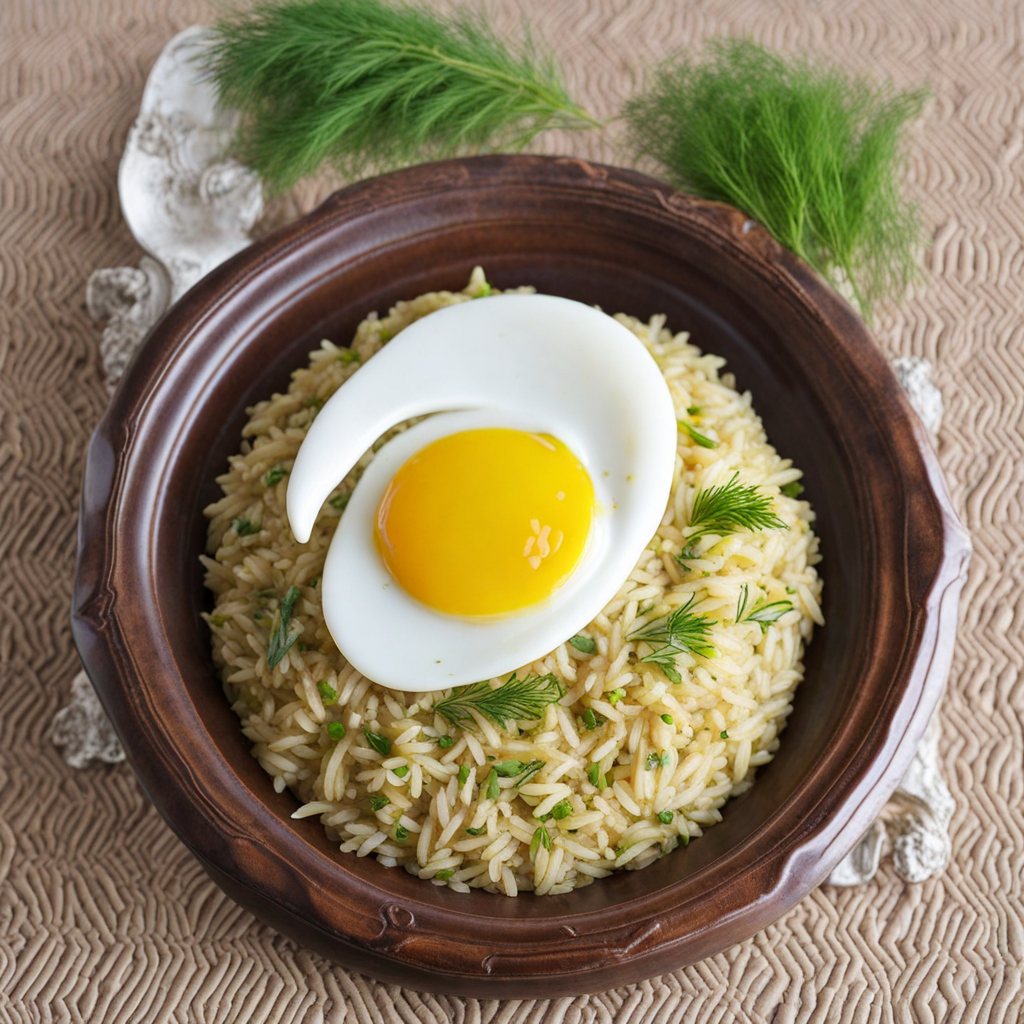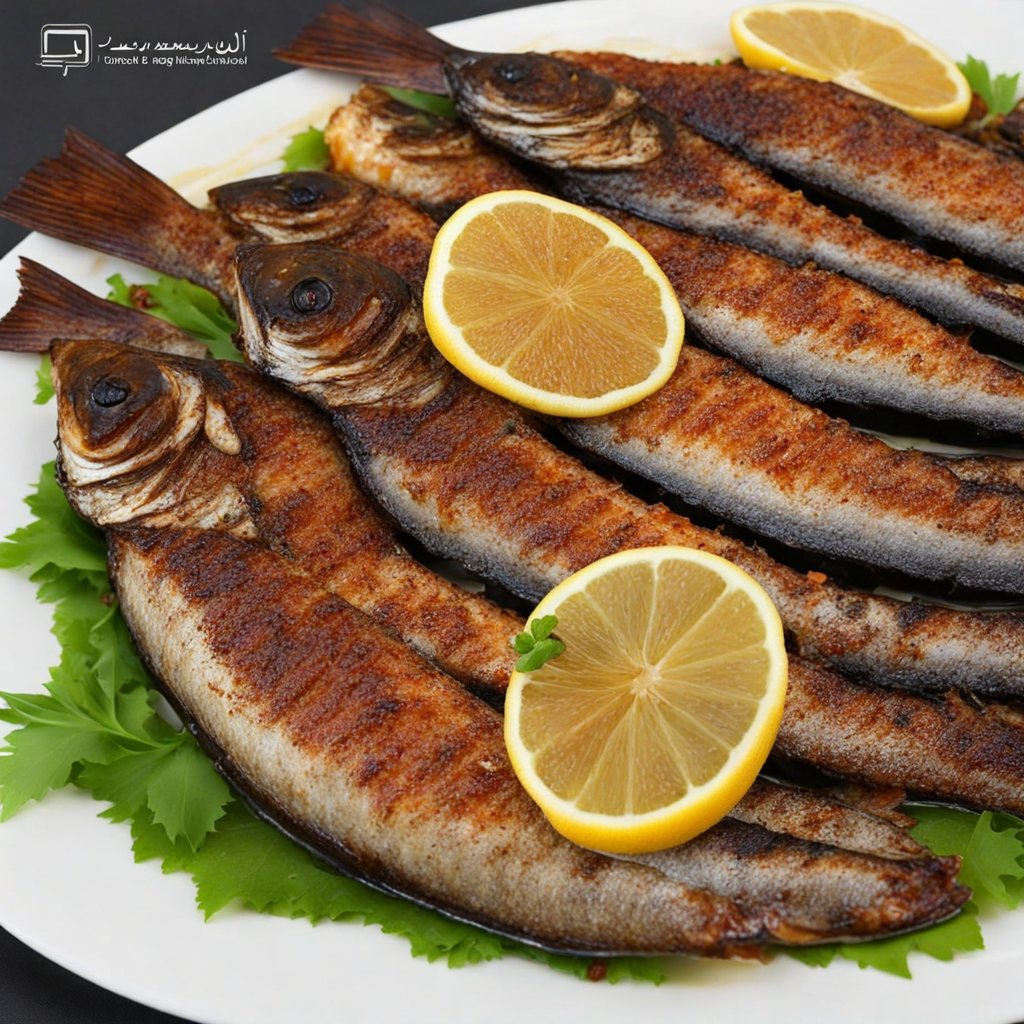Kleicha
Kleicha is a traditional Iraqi pastry that beautifully marries flavors and textures, offering a delightful experience for those eager to explore new culinary horizons. These aromatic cookies are often filled with a variety of ingredients such as dates, walnuts, or pistachios, making each bite a burst of rich, sweet goodness. The dough is typically made from flour, sugar, and a hint of cardamom or cinnamon, which adds a warm and spicy undertone that complements the sweetness of the fillings. The pastry is usually shaped into rounds or crescents, giving it a charming appearance that makes it perfect for sharing during special occasions or family gatherings. The preparation of Kleicha is steeped in tradition, often passed down through generations, and it showcases the artistry of Iraqi baking. The dough is expertly rolled out and filled before being delicately folded or shaped, resulting in a flaky exterior that contrasts beautifully with the soft and flavorful filling inside. Whether baked to a golden brown or lightly dusted with powdered sugar, Kleicha is not only pleasing to the eye but also irresistible to the palate. Enjoyed with a cup of strong Iraqi tea or Arabic coffee, Kleicha is more than just a treat; it’s a cultural experience that invites you to savor the heart and soul of Iraqi hospitality. Each bite reveals a story of heritage and warmth, making it a perfect introduction to the diverse and rich flavors of Iraqi cuisine. From festive gatherings to quiet moments of indulgence, Kleicha is a delightful way to discover the unique taste of Iraq, leaving a lasting impression on anyone who tries it.
How It Became This Dish
Origins of كليچة كليچة (Kleicha) is a traditional Iraqi pastry that has roots deeply embedded in the culinary history of the region. Its origins can be traced back to the rich tapestry of Mesopotamian cuisine, which dates back thousands of years. The word "كليچة" itself is derived from the Arabic term for "cookie," but the dish has evolved significantly over time, becoming a unique representation of Iraqi culture. The earliest forms of sweet baked goods in Mesopotamia were likely simple flatbreads flavored with honey and nuts. As trade routes expanded and cultures intersected, the influence of Persian, Ottoman, and Arab culinary traditions started to shape the evolution of pastries in Iraq. The introduction of various spices, nuts, and dried fruits played a crucial role in transforming these early baked goods into more complex and flavorful treats, paving the way for ماكليچة. Cultural Significance كليچة holds a special place in Iraqi society, often associated with celebrations and communal gatherings. Traditionally, families prepare this pastry during significant events such as weddings, Eid, and other religious holidays. The act of making كليچة is often a communal effort, where mothers and daughters come together to knead the dough, shape the pastries, and fill them with a variety of sweet or savory fillings. This collaborative process not only fosters family bonds but also preserves the culinary heritage passed down through generations. In Iraqi homes, كليچة is more than just a dessert; it symbolizes hospitality. When guests arrive, serving this delightful pastry is a gesture of welcome and generosity. The presentation of كليچة, often arranged elegantly on a platter, reflects the pride of the host and the importance of sharing food as a means of building relationships. Ingredients and Preparation The preparation of كليچة can vary significantly based on regional preferences and family traditions. The dough is typically made from a mixture of flour, sugar, yeast, and butter or ghee, producing a soft and flaky texture. The filling is where the true creativity lies, with options ranging from date paste, walnuts, and pistachios to more unique combinations incorporating spices like cardamom and cinnamon. To make كليچة, the dough is rolled out and cut into circles, which are then filled with the chosen mixture before being sealed and shaped into decorative forms. The pastries are baked until golden brown, creating a delightful aroma that fills the home. Some variations may even involve frying instead of baking, offering a different texture and flavor profile. Regional Variations Throughout Iraq, regional variations of كليچة exist, reflecting the diverse cultural influences within the country. In southern Iraq, for instance, the use of date filling is prevalent, while in the north, more nuts and spices may be incorporated. Each region boasts its distinct recipes and methods, showcasing the adaptability of كليچة to local tastes and available ingredients. In addition to these regional differences, the influence of neighboring countries has also impacted the way كليچة is prepared and enjoyed. For example, in Iran, a similar pastry called "Kleech" is made, sharing some flavor profiles while maintaining its unique characteristics. This cross-cultural exchange highlights the interconnectedness of Middle Eastern cuisines and the shared appreciation for sweet baked goods. Modern Adaptations In recent years, كليچة has seen a resurgence in popularity, particularly among younger generations eager to preserve their cultural heritage. Modern interpretations of كليچة often incorporate contemporary ingredients and techniques, making the pastry more accessible to a global audience. Some chefs experiment with flavors such as chocolate or fruit jams, blending traditional fillings with modern tastes. Social media platforms have also played a significant role in revitalizing interest in كليچة. Food bloggers and influencers from Iraq and the diaspora share their family recipes and personal stories related to the pastry, creating a sense of community and pride around this beloved dish. As a result, كليچة has gained recognition beyond Iraqi borders, inviting food enthusiasts worldwide to explore its rich history and delightful flavors. Celebration of Heritage The enduring popularity of كليچة is a testament to its cultural significance and the pride that Iraqi people take in their culinary heritage. Each bite of this pastry carries the flavors of history, tradition, and a sense of belonging. During celebrations, the presence of كليچة on the table serves as a reminder of the importance of family, community, and shared experiences. As Iraq continues to navigate modern challenges, the act of preparing and sharing كليچة remains a vital connection to the past. It is not merely a pastry; it is a symbol of resilience, continuity, and the enduring spirit of a people who cherish their traditions. The journey of كليچة from ancient Mesopotamia to contemporary kitchens is a reflection of the evolving nature of food and culture, reminding us of the power of culinary heritage in shaping identities and fostering connections. In conclusion, كليچة serves as a culinary bridge between the past and present, encapsulating the essence of Iraqi culture through its flavors, preparation methods, and communal significance. Whether enjoyed during joyous celebrations or cherished as a family recipe, كليچة remains an integral part of Iraq's gastronomic landscape, inviting future generations to continue the tradition and explore its many delicious interpretations.
You may like
Discover local flavors from Iraq


